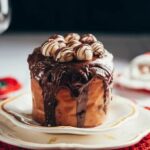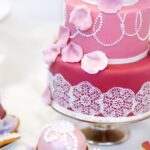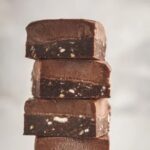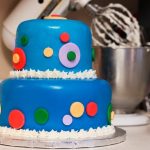Are you looking to take your cake decorating skills to the next level? Whether you’re a beginner or an experienced baker, mastering the art of decorating cakes with icing can truly elevate your creations. In this article, we will explore the different types of icing, essential tools and equipment, step-by-step techniques, and tips for adding color and decorations.
Icing is not only a delicious addition to a cake but also serves as a canvas for creative expression. From buttercream to fondant, royal icing, and more, there are various types of icing that can be used to create stunning designs. Understanding the characteristics and uses of each type of icing is essential for achieving professional-looking results.
Before diving into the different icing techniques, it’s crucial to have the right tools and equipment on hand. From spatulas and piping bags to turntables and combs, having the proper supplies can make all the difference in creating beautifully decorated cakes. We’ll discuss the essential tools needed for cake decorating with icing in detail so you can be fully prepared for your projects.
Types of Icing
When it comes to decorating cakes with icing, there are several types of icing to choose from, each with its own unique characteristics and uses. Buttercream icing is a popular choice for its creamy texture and delicious flavor. It is versatile and easy to work with, making it suitable for a variety of cake decorating techniques.
Fondant, on the other hand, is a smooth, pliable icing that can be rolled out and draped over cakes for a flawless finish. Royal icing is made from egg whites and confectioner’s sugar, and it hardens to a smooth, shiny finish, making it ideal for intricate designs and decorations.
In addition to these popular types of icing, there are other options such as cream cheese frosting, ganache, and glazes that offer different textures and flavors for cake decoration. Each type of icing requires different handling and application techniques, so it’s important to understand the unique properties of each in order to achieve the desired result when decorating a cake.
Understanding the differences between buttercream, fondant, royal icing, and other types of icing is essential in creating beautifully decorated cakes. Different icings have varying consistencies and appearances which can drastically affect how a cake looks. Knowing how to work with these different types of icings will not only help in achieving professional-looking results but also allows for creativity in cake decoration.
| Type of Icing | Description |
|---|---|
| Buttercream | A creamy and versatile icing that is easy to work with. |
| Fondant | A smooth and pliable icing that can be rolled out for a flawless finish. |
| Royal Icing | Made from egg whites and confectioner’s sugar; dries to a smooth finish ideal for intricate designs. |
Essential Tools and Equipment for Decorating Cakes With Icing
Decorating cakes with icing requires the use of essential tools and equipment to achieve professional-looking results. Whether you are a beginner or an experienced baker, having the right tools at your disposal can make all the difference in creating beautifully decorated cakes. From spatulas to piping bags, here are some essential tools and equipment for decorating cakes with icing.
Offset Spatula
An offset spatula is a must-have tool for cake decorating. Its angled shape allows for smooth and precise application of icing on the cake layers. Whether you are spreading buttercream or smoothing out fondant, an offset spatula enables you to achieve a polished finish on your cakes.
Piping Bags and Tips
Piping bags and tips are essential for creating intricate designs and decorations with icing. Different tips allow for various designs such as rosettes, borders, and writing. Invest in a variety of piping tips to expand your decorating capabilities and add dimension to your cakes.
Turntable
A turntable is a game-changer when it comes to frosting cakes with ease. It allows you to rotate the cake while applying icing, ensuring even coverage and smooth finishes. A turntable is especially helpful for piping designs around the sides of the cake.
In addition to these tools, having a good quality cake smoother, bench scraper, and decorating comb can also greatly assist in achieving professional-looking results when decorating cakes with icing. By using the right tools and equipment, you can elevate your cake decorating skills and create impressive designs that will impress everyone who sees – and tastes – your creations.
Step-by-Step Guide
When it comes to cake decorating with icing, the first step is to properly prepare your cake for the icing process. Here are some essential steps and tips for getting your cake ready for a beautiful icing design:
1. Leveling the Cake: Before you begin icing, it’s important to ensure that your cake is level. Use a long serrated knife or a cake leveler to carefully slice off any domed or uneven areas from the top of your cake layers.
2. Filling and Layering: If you are working with a layered cake, consider adding a delicious filling between each layer. This could be anything from fruit preserves to frosting or ganache. Once filled, stack the layers on top of each other, ensuring that they are evenly aligned.
3. Crumb Coating: To prevent loose crumbs from ruining your final icing design, apply a thin layer of frosting over the entire exterior of the cake. This initial layer, known as a crumb coat, will seal in any loose crumbs and provide a smooth base for your final layer of icing.
Once these steps are complete, your cake will be ready for the next phase in the decorating process.
4. Chilling the Cake: After applying the crumb coat, it’s recommended to chill your cake in the refrigerator for at least 30 minutes before moving on to applying the final layer of icing.
Prepare Your Cake for Icing:
By following these steps and taking your time to properly prepare your cake for icing, you’ll create a flawless canvas for showcasing your creativity and skill in decorating cakes with icing.
Basic Icing Techniques
When it comes to decorating cakes with icing, mastering basic icing techniques is essential for creating beautifully finished cakes. Whether you’re a beginner or an experienced baker, knowing how to achieve smooth and textured finishes will take your cake decorating skills to the next level.
To achieve a smooth finish on your cake, start by applying a crumb coat of icing. This thin layer of icing seals in any crumbs and creates a smooth base for the final layer of icing. Once the crumb coat has set, use a bench scraper or offset spatula to apply a thick layer of icing to the cake.
Smooth out the icing using long strokes, rotating the cake as you go. For an extra-smooth finish, run a hot spatula or bench scraper under hot water and then use it to smooth out any imperfections in the icing.
If you prefer textured finishes on your cakes, there are various techniques you can use to create different effects with icing. One popular method is using a comb tool to create ridges or patterns in the icing. Alternatively, you can use different piping tips to create swirls, rosettes, or other decorative textures on the surface of the cake.
Here are some basic icing techniques for achieving smooth and textured finishes:
- Apply a crumb coat before adding the final layer of icing
- Use a bench scraper or offset spatula to smooth out the icing
- Experiment with different tools and piping tips to create textured finishes
Mastering these basic icing techniques will give you more confidence when decorating cakes with icing and allow you to get creative with different finishes for your cakes.
Advanced Icing Techniques
When it comes to advanced icing techniques, piping, rosettes, and borders can take your cake decorating skills to the next level. Piping involves using a pastry bag to create intricate designs, while rosettes add a decorative touch with their spiral-shaped frosting. Borders are the finishing touch that can tie the entire cake design together. Mastering these techniques will help you elevate your cake decorating game and impress your friends and family with beautifully decorated confections.
To begin mastering advanced icing techniques, it’s important to invest in the right tools. A set of piping tips in various shapes and sizes will allow you to create different designs, while a sturdy pastry bag will make the process smoother. Additionally, having a turntable for your cake will make it easier to apply even pressure when piping or creating rosettes.
Before diving into piping and creating rosettes, it’s essential to practice on parchment paper or a practice board first. This will give you a feel for how much pressure to apply and allow you to perfect your technique before moving onto the actual cake. As for borders, there are various techniques such as shell borders, rope borders, and ruffle borders that can add visual interest to your cakes.
Adding color and decorations to your icing is another way to enhance the overall look of your cake. Gel food coloring is preferred over liquid food coloring as it won’t water down the consistency of the icing. Edible pearls, sprinkles, or edible flowers can also be used to further embellish your creations. Practice makes perfect when it comes to advanced icing techniques, so don’t be afraid to experiment and get creative with your designs.
Tips for Adding Color and Decorations to Icing
Adding color and decorations to icing can take your cake decorating to the next level, creating visually stunning and appetizing treats. Whether you’re looking to create a simple and elegant design or a more elaborate and vibrant masterpiece, there are various tips and techniques that can help you achieve the desired look for your cakes.
Using Food Coloring
When it comes to adding color to icing, food coloring is the go-to option. Gel food colors are highly recommended as they are more concentrated and have less liquid compared to liquid food coloring. This means that they won’t alter the consistency of your icing, allowing you to achieve vibrant colors without affecting the texture of your frosting.
Color Blending Techniques
Creating custom shades for your icing is made possible through color blending techniques. For a smooth transition between colors, use a toothpick or small spatula to gently blend them together on the surface of your icing. This technique is particularly useful when creating gradient effects or ombre designs on your cakes.
Decorative Elements
In addition to adding color, incorporating decorative elements such as edible glitter, sprinkles, fondant shapes, or edible flowers can elevate the overall appearance of your cake. These decorative elements can add texture, dimension, and visual interest to your design.
By mastering these tips for adding color and decorations to icing, you can unleash your creativity and bring your cake decorating vision to life with stunning results.
Troubleshooting Common Icing Decorating Problems
Decorating cakes with icing can be a fun and rewarding experience, but it does come with its own set of challenges. As you dive into the world of cake decorating, you may encounter some common problems that can affect the overall look and taste of your finished product. Here are some tips for troubleshooting these issues and achieving professional-looking results.
One common problem when decorating cakes with icing is air bubbles in the icing. These air bubbles can create an uneven surface and impact the overall appearance of your cake. To prevent this, make sure to properly mix your icing and use a spatula to smooth out any air pockets as you apply it to the cake. If you still end up with air bubbles, gently tap the surface of the icing with a spatula to release them.
Another issue that many bakers face is icing that is too runny or too stiff. This can make it difficult to achieve smooth and even coverage on your cake. If your icing is too runny, try adding more confectioners’ sugar gradually until you reach the desired consistency. On the other hand, if your icing is too stiff, add small amounts of liquid (such as milk or water) until it reaches the right texture for spreading or piping.
Additionally, some decorators may have trouble with their icing not sticking to the cake properly, resulting in unsightly wrinkles or gaps in the finish. To avoid this, make sure that your cake is completely cooled before applying the icing. You can also use a crumb coat-a thin layer of icing applied before the final layer-to help seal in any loose crumbs and provide a smooth base for your decoration.
In summary, troubleshooting common icing decorating problems involves being mindful of consistency, working out air pockets, and ensuring proper preparation of your cake before decorating.
| Common Problem | Troubleshooting Tips |
|---|---|
| Air bubbles in icing | Smooth out air pockets while applying; tap surface with spatula to release bubbles |
| Runny or stiff icing | Add confectioners’ sugar for runny; add liquid for stiff |
| Icing not sticking to cake | Ensure cake is completely cooled; use a crumb coat before final layer of decoration |
Conclusion
In conclusion, mastering the art of decorating cakes with icing can be a fun and rewarding experience for both professional bakers and home cooks alike. With the right tools, techniques, and a little creativity, you can transform a simple cake into a beautiful masterpiece that will impress your friends and family.
From learning about the different types of icing to understanding essential tools and equipment, this article has provided valuable insights into the world of cake decorating. Whether you prefer the smooth finish of buttercream or the clean lines of fondant, there are endless possibilities for creating stunning designs on your cakes.
By following the step-by-step guide and practicing basic and advanced icing techniques such as piping, rosettes, and borders, you can elevate your cake decorating skills to new heights. Additionally, experimenting with different colors and decorations will allow you to personalize your creations and make them truly unique.
In the end, with patience and practice, you can overcome common icing decorating problems and become proficient in creating beautifully decorated cakes that look as good as they taste. So go ahead, unleash your creativity, master the art of decorating cakes with icing, and delight your loved ones with delicious works of edible art.
Frequently Asked Questions
What Is the Best Way to Put Icing on a Cake?
The best way to put icing on a cake is to start with a crumb coat, which is a thin layer of icing that seals in any loose crumbs. Then, apply a thicker layer of icing and use a spatula to smooth it out.
How Do You Frost a Cake for Beginners?
For beginners, frosting a cake can seem daunting, but it’s important to start with a cooled cake and use an offset spatula to apply the frosting. Begin with a thin layer of frosting for the crumb coat, then add more for the final coating.
How Do You Make a Plain Cake Look Fancy?
To make a plain cake look fancy, you can add decorative elements such as fresh fruit, edible flowers, or chocolate shavings on top. You can also use piping techniques to create intricate designs with icing or frosting.

Welcome to my blog about home and family. This blog is a place where I will share my thoughts, ideas, and experiences related to these important topics. I am a stay-at-home mom with two young children. I hope you enjoy reading it! and may find some helpful tips and ideas that will make your home and family life even better!





